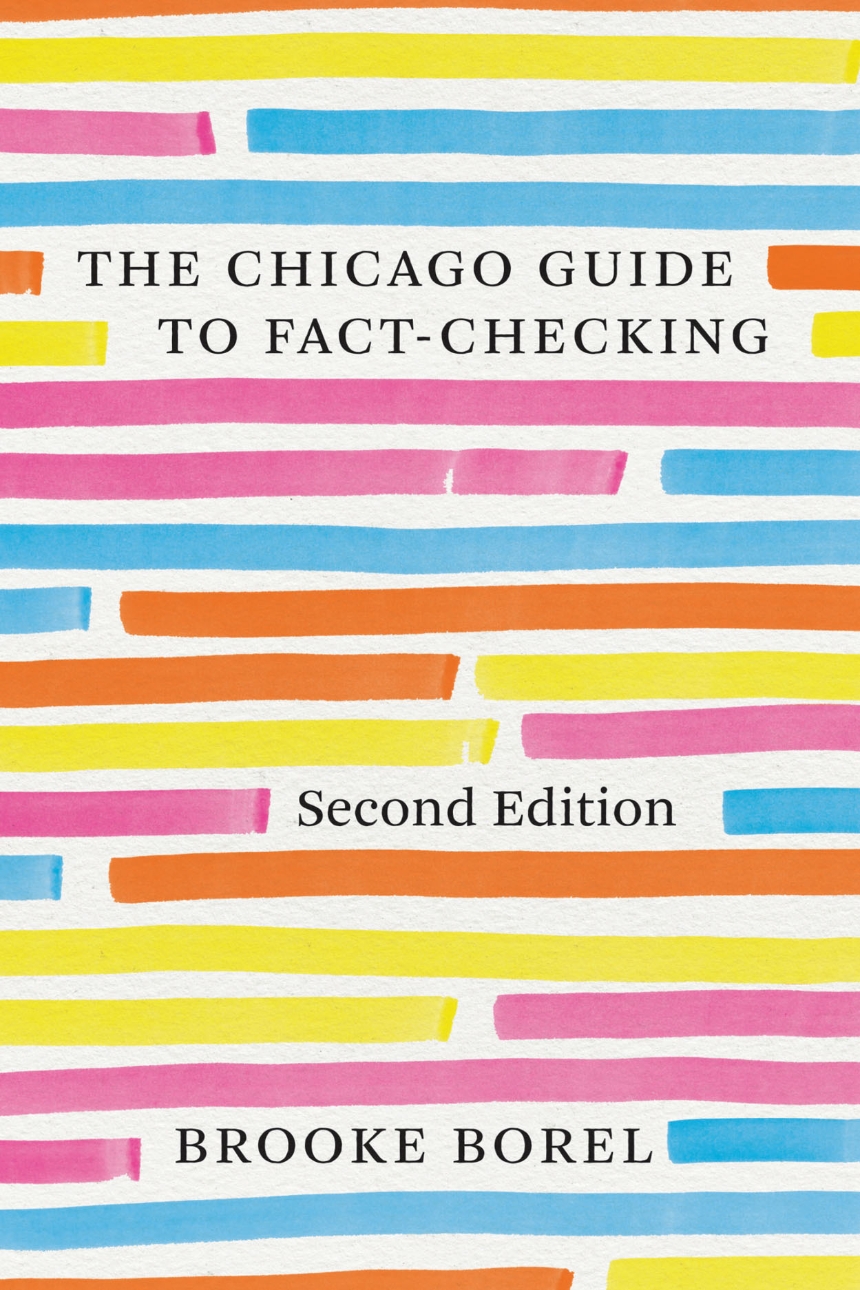The Chicago Guide to Fact-Checking, Second Edition
Second Edition
- Recognize what information to fact-check
- Identify the quality and ranking of source materials
- Learn to fact-check a variety of media types: newspaper; magazine; social media; public and commercial radio and television, books, films, etc.
- Navigate relationships with editors, writers, and producers
- Recognize plagiarism and fabrication
- Discern conflicting facts, gray areas, and litigious materials
- Learn record keeping best practices for tracking sources
- Test your own fact-checking skills
Over the past few years, fact-checking has been widely touted as a corrective to the spread of misinformation, disinformation, conspiracy theories, and propaganda through the media. “If journalism is a cornerstone of democracy,” says author Brooke Borel, “then fact-checking is its building inspector.”
In The Chicago Guide to Fact-Checking, Borel, an experienced fact-checker, draws on the expertise of more than 200 writers, editors, and fellow checkers representing the New Yorker, Popular Science, This American Life, Vogue, and many other outlets. She covers best practices for editorial fact-checking in a variety of media—from magazine and news articles, both print and online, to books and podcasts—and the perspectives of both in-house and freelance checkers.
In this second edition, Borel covers the evolving media landscape, with new guidance on checking audio and video sources, polling data, and sensitive subjects such as trauma and abuse. The sections on working with writers, editors, and producers have been expanded, and new material includes fresh exercises and advice on getting fact-checking gigs. Borel also addresses the challenges of fact-checking in a world where social media, artificial intelligence, and the metaverse may make it increasingly difficult for everyone—including fact-checkers—to identify false information. The answer, she says, is for everyone to approach information with skepticism—to learn to think like a fact-checker.
The Chicago Guide to Fact-Checking is the practical—and thoroughly vetted—guide that writers, editors, and publishers continue to consult to maintain their credibility and solidify their readers’ trust.
256 pages | 5 halftones, 3 line drawings | 5 1/2 x 8 1/2 | © 2023
Chicago Guides to Writing, Editing, and Publishing
Guides, Manuals, and Reference: Guides for Creative Writers, Guides for Journalists, Guides to Editing and Publishing
Reviews
Table of Contents
Introduction
Chapter One: Why We Fact-Check
Chapter Two: What We Fact-Check
Chapter Three: How We Fact-Check
The Magazine Model
The Newspaper Model
The Hybrid Model
Fact-Checking Other Media
Navigating Relationships with Editors, Writers, and Producers
Fact-Checking on a Budget
Fact-Checking Your Own Writing
How to Get a Fact-Checking Job
Chapter Four: Checking Different Types of Facts
Basic Facts
Numbers and Measurements
Polls
Quotes
Concepts
Analogies
Images
Physical Descriptions
Sports
Historical Quotes and Stories
Product Claims
Languages Other than English
Outlets outside the United States
“Common Knowledge”
Headlines and Cover Lines
Facts from Anonymous or Sensitive Sources
Sensitive Subjects: Trauma, Abuse, and More
Conflicting Facts
Gray Areas
Litigious Material
Plagiarism and Fabrication
Chapter Five: Sourcing
People
Interview Recordings and Transcripts
Search Engines and Wikis
Maps and Atlases
Press Releases
Books
Newspapers
Other Publications
Academic Literature
Chapter Six: Record Keeping
Paper Backup
Electronic Backup
Chapter Seven: Test Your Skills
Conclusion
Acknowledgments
Appendix One: “Test Your Skills” Answer Keys
Appendix Two: Suggested Reading and Listening
References
Index
